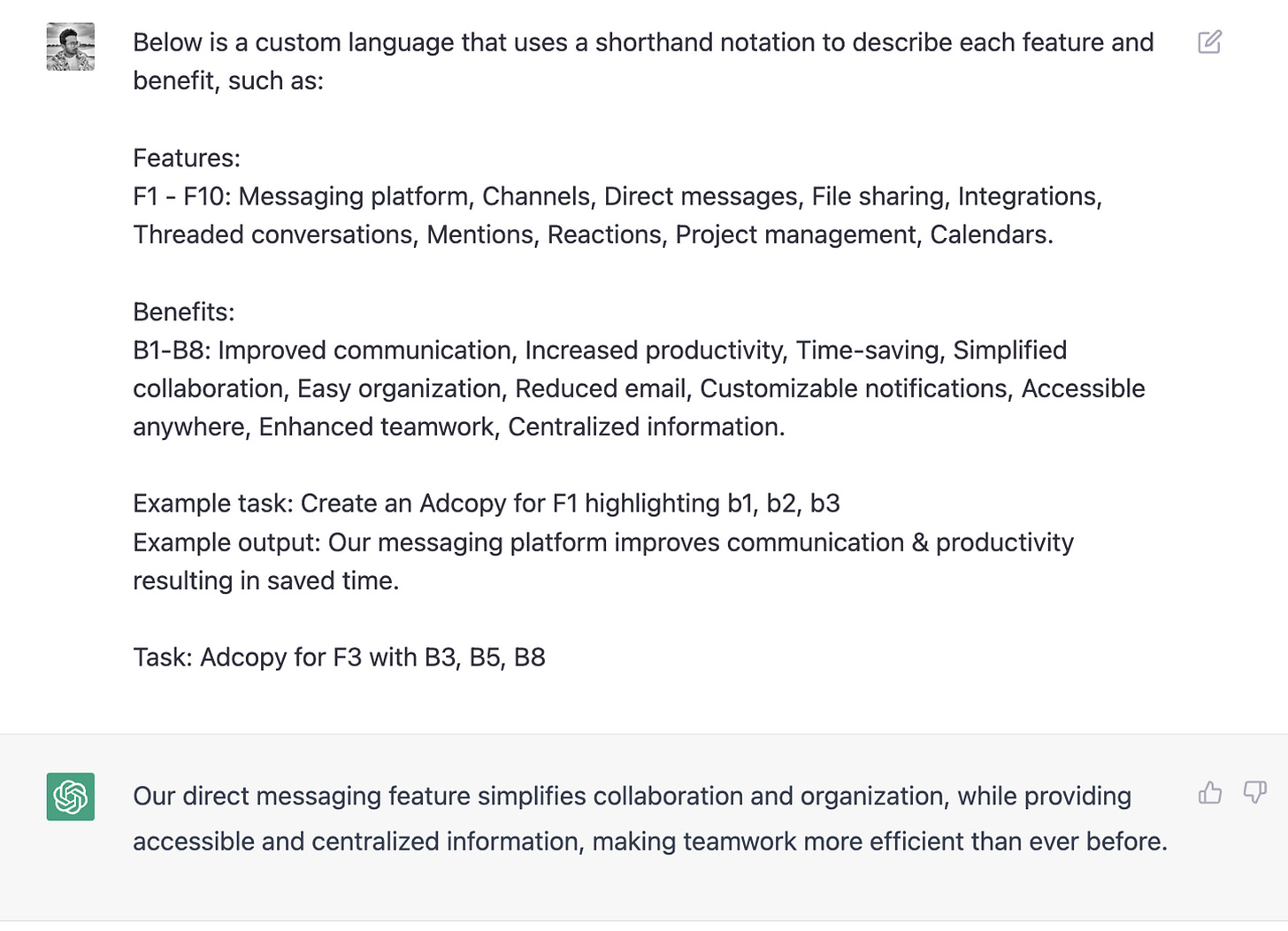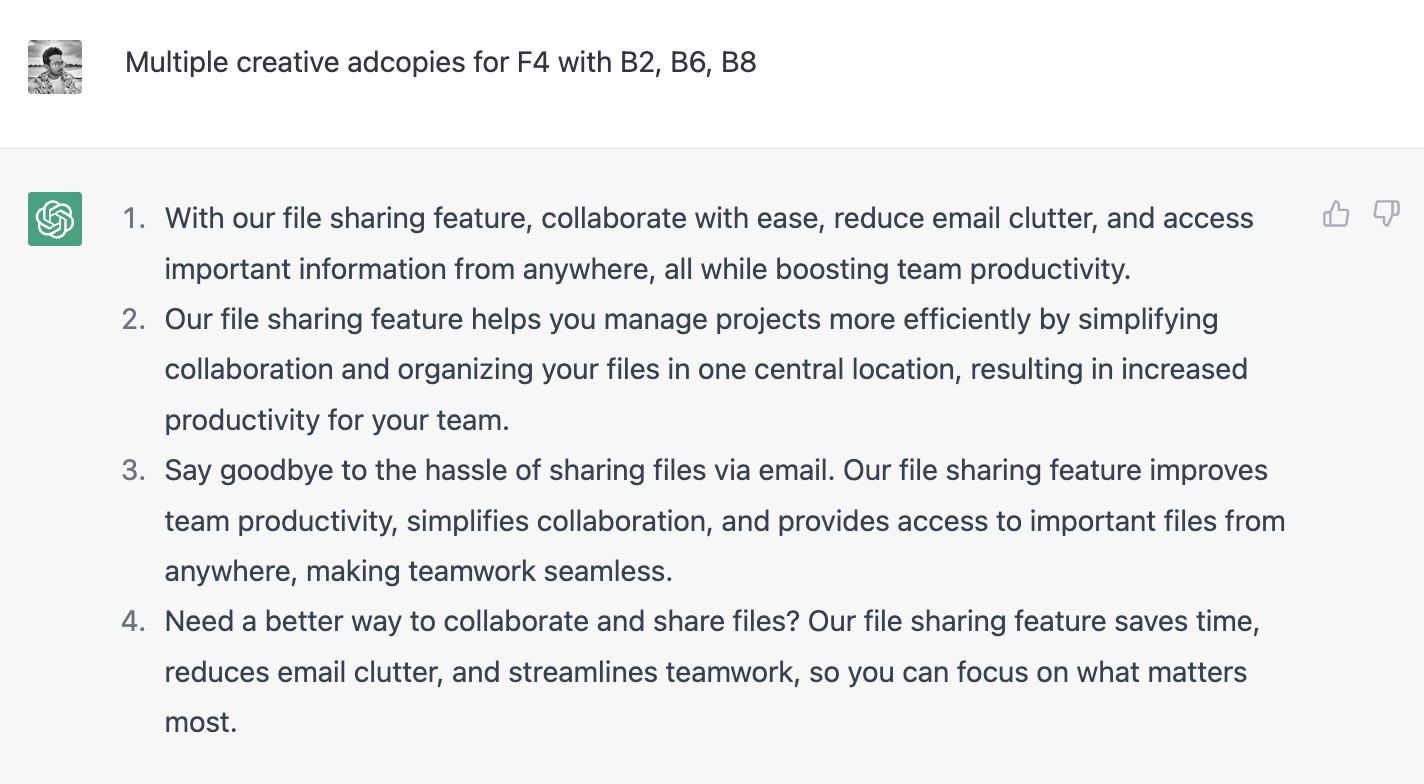Prompt patterns 101: Creating your own shortcuts in GPT3
As I continue to interact with ChatGPT, I realize that it can do much more than just answer a few trivial questions or routine tasks. Eliciting responses from ChatGPT via prompts is becoming an increasingly important skillset, called prompt engineering. But a lot of prompt engineering posts I saw in Linkedin or Twitter are nothing but specific use case examples. Which gave me a sense that writing a prompt is more art than science.
In my search for better prompts I found this research paper by Jules White & team which identifies patterns in prompts instead of focusing on specific prompt examples. I love this approach as it can helps us get more out of LLMs systematically and decided to write in detail about each pattern.
In this blog post, I will show you one such prompt pattern which helped me create my own shortcuts in ChatGPT & efficiently perform day-to-day tasks.
Conversational English is not enough
While language models can understand conversational English, it isn't always the most effective way to convey our ideas. To bridge this gap, we need to find a solution that can optimize our communication with these models. This is where the Meta Language Creation pattern comes in handy, allowing us to create a custom language or shorthand that language models can understand more efficiently.
The Power of Meta Language Creation Pattern
The Meta Language Creation pattern involves creating a custom language or shorthand that the language model can understand more easily. This pattern is especially useful if the concepts or structures we're trying to convey are better expressed in a different language or notation than the standard way we communicate with language models.
Benefits of Using the Meta Language Creation Pattern
The benefits of using the Meta Language Creation pattern are immense, including:
Improved accuracy: The language model can better understand your intent, leading to more accurate output.
Efficient communication: You can communicate complex concepts and structures more efficiently using a custom language.
Better results: By optimizing communication with the language model, you can achieve better results for your marketing efforts.
Simplifying a tedious task
Let's say you're working on a project that involves creating a large number of user accounts for a web application, and you need to generate a list of unique usernames and passwords for each account. However, you don't want to manually enter each username and password into the system one by one.
You could create a custom language that uses a shorthand notation to describe the format of each username and password, such as:
"U:3L,3N" to indicate a username with 3 random letters followed by 3 random numbers
"P:4S,2N,2S" to indicate a password with 4 random symbols, 2 random numbers, and 2 random symbols
Using this language, you could generate a list of 100 unique usernames and passwords by simply typing: "U:3L,3N P:4S,2N,2S" x10
This tells the LLM to generate 100 sets of usernames and passwords, each with a username consisting of 3 random letters followed by 3 random numbers and a password consisting of 4 random symbols, 2 random numbers, and 2 random symbols.
Applying Meta Language Creation Pattern in Real Life
Let's say you want to generate ad copies to test different messaging for your product. You can use Meta Language Creation to create shorthand notations for each product feature and benefit. For example, "F1" can represent "feature 1" and "B1" can represent "benefit 1."
Now, instead of explaining the context of your product and asking ChatGPT to generate multiple versions of ad copies, you can simply provide a list of features and benefits using the shorthand notation. This makes the process smoother and more efficient, giving you more time to focus on other important tasks.
Take my favorite app, Slack, for example. I have listed down its features, benefits, and used the notation to represent them.
Now, ChatGPT understands what I mean by F1, B2, etc. and all I need to do is use those notations. Using Meta Language Creation instead of plain English can help make the generation process smoother and more efficient. Here's the follow-up command I gave ChatGPT:
The Meta Language Creation pattern holds tremendous potential for improving the efficiency and effectiveness of our interactions with language models. This optimization of communication has the potential to yield better results in many fields and day-to-day tasks. I encourage you to explore this pattern further and experiment with creating your own shortcuts to see how it can improve your interactions with LLMs. Let's keep pushing the boundaries of what is possible with these incredible tools!




